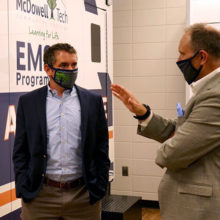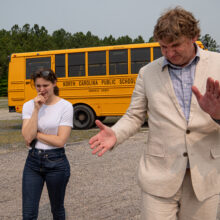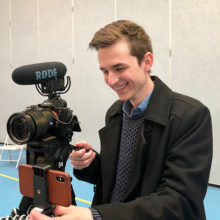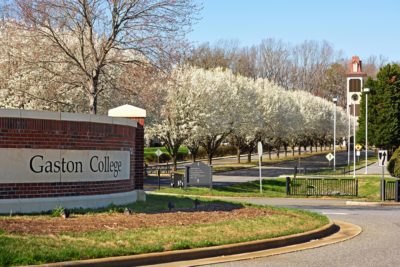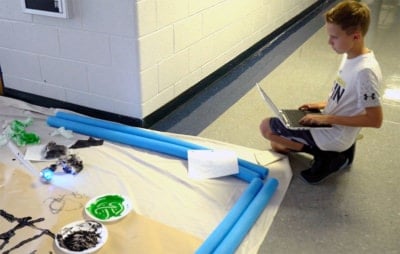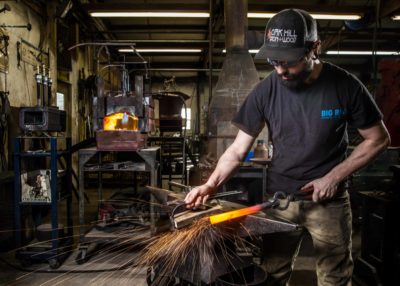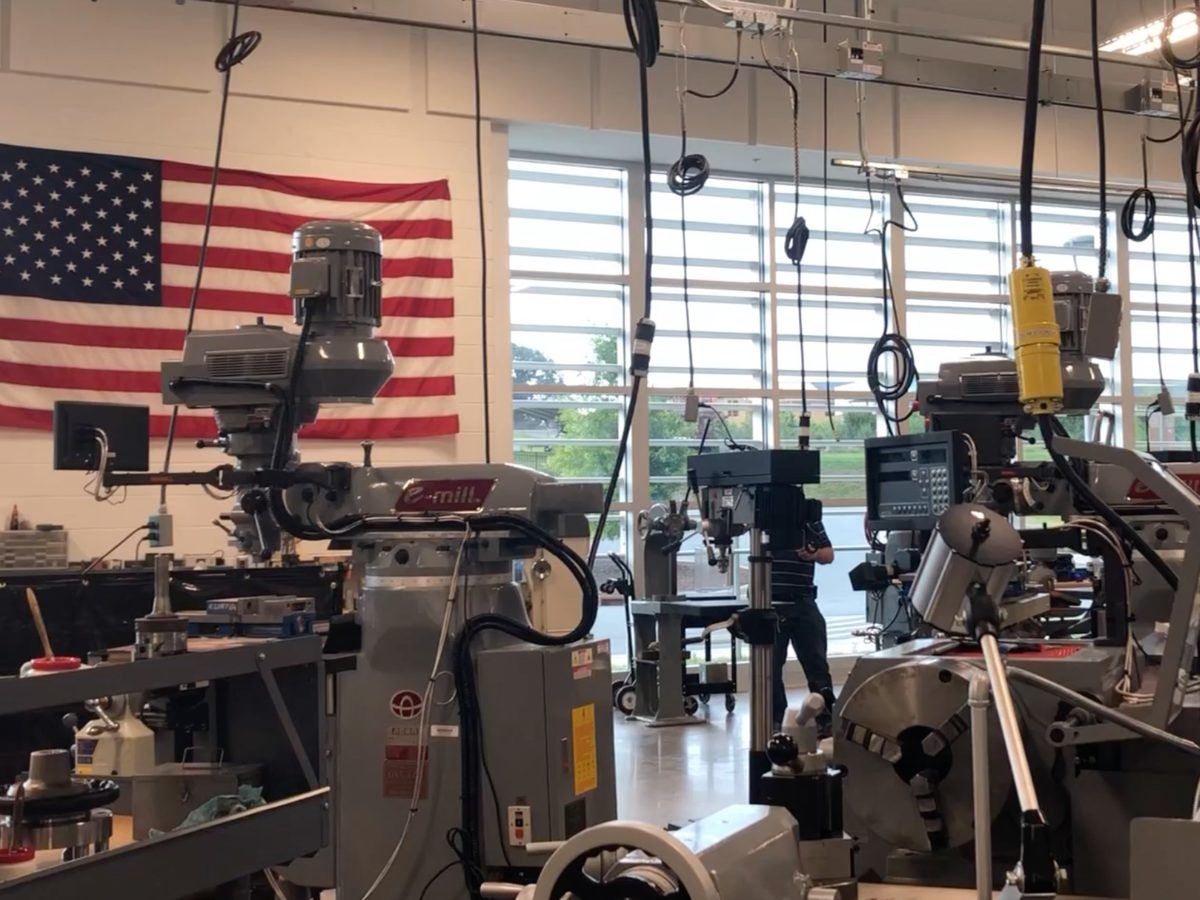
This article is part of the Solution Seekers series. Find the full series here.
Garrett Hinshaw, president of Catawba Valley Community College (CVCC), and Michael Helmick, when he was president of Western Piedmont Community College (WPCC), led two institutions that sit roughly 25 minutes from each other.
Collectively, the two colleges’ service areas extended across three of the four counties that make up the Unifour region (the Hickory-Lenoir-Morganton Metropolitan Statistical Area). The Unifour has nearly 370,000 residents — and for a long time, it was the cradle of the furniture and textile industry in North Carolina.
Hinshaw and Helmick consistently spoke about the redundancies in educational offerings between adjacent community colleges. Their conversations expanded to include Randall Burns, project manager for Innovation & Partners at WPCC; the late Mark Story, who was head of K-64; and others.
The conversations’ common thread was how the colleges could best serve students, who had little reason to care about the idea of service areas, and collectively build talent for the Unifour region.
“As a capacity builder in the region, we understand our responsibility to lead and develop partnerships that help everyone’s boats to rise in western North Carolina,” Hinshaw said recently. “We are hoping that we can work with our partners to create more clear pathways to future success and differentiate our region in the talent development arena.”
K-64 already had established a template for alignment within Catawba County. The goal of K-64 was for Catawba County’s education and economic sectors to work together to prepare residents, ranging from pre-kindergarten to those nearing retirement, to compete in the global economy. That included building a talented pipeline through one-to-world technology, character and soft skills development, work-based learning, and more.
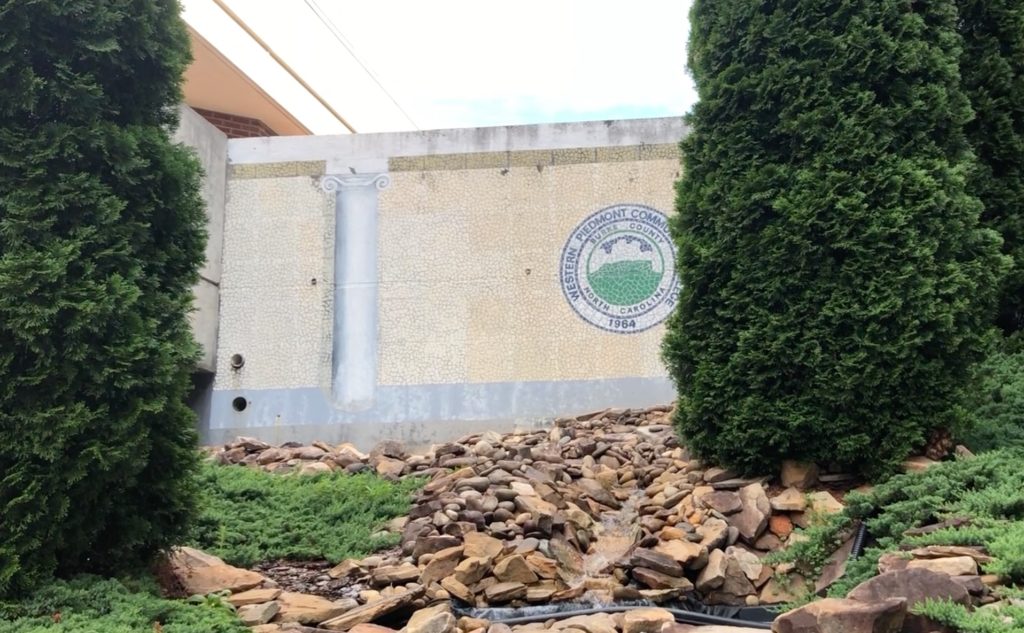
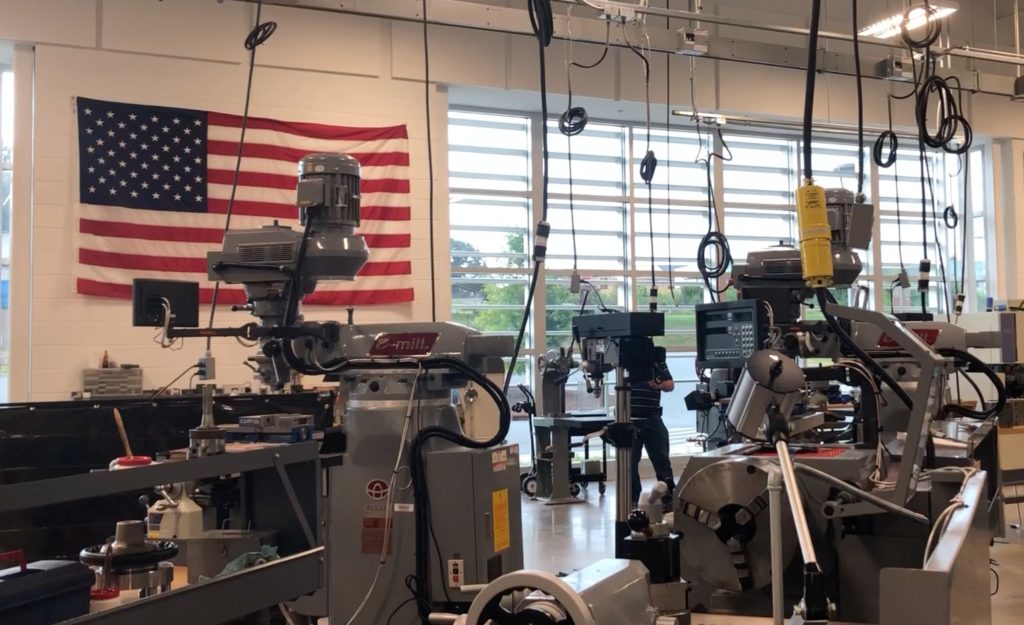
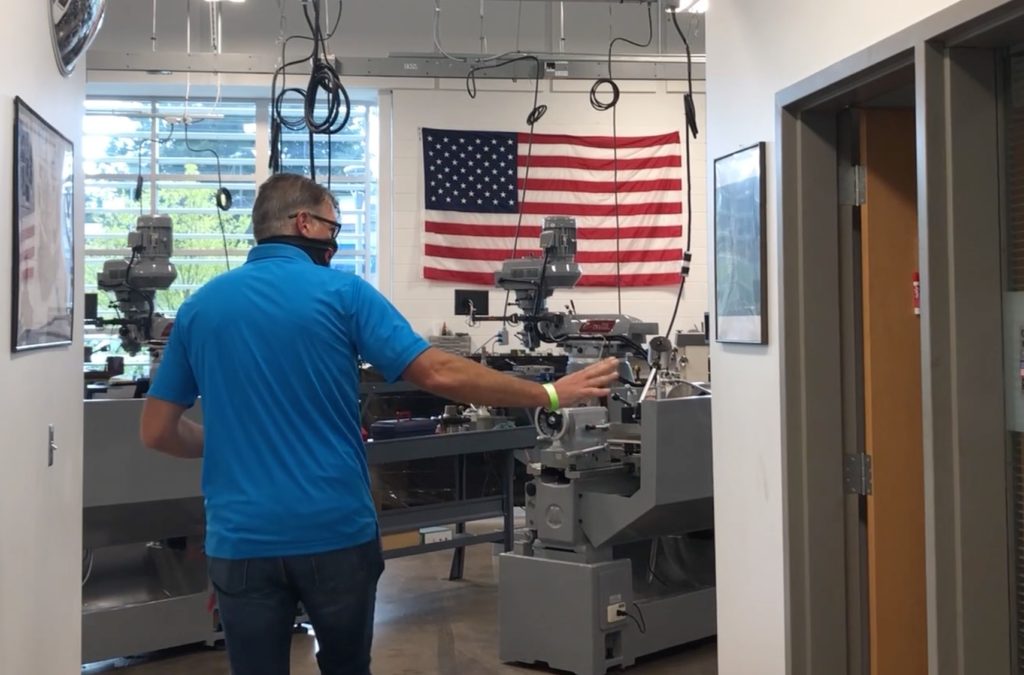
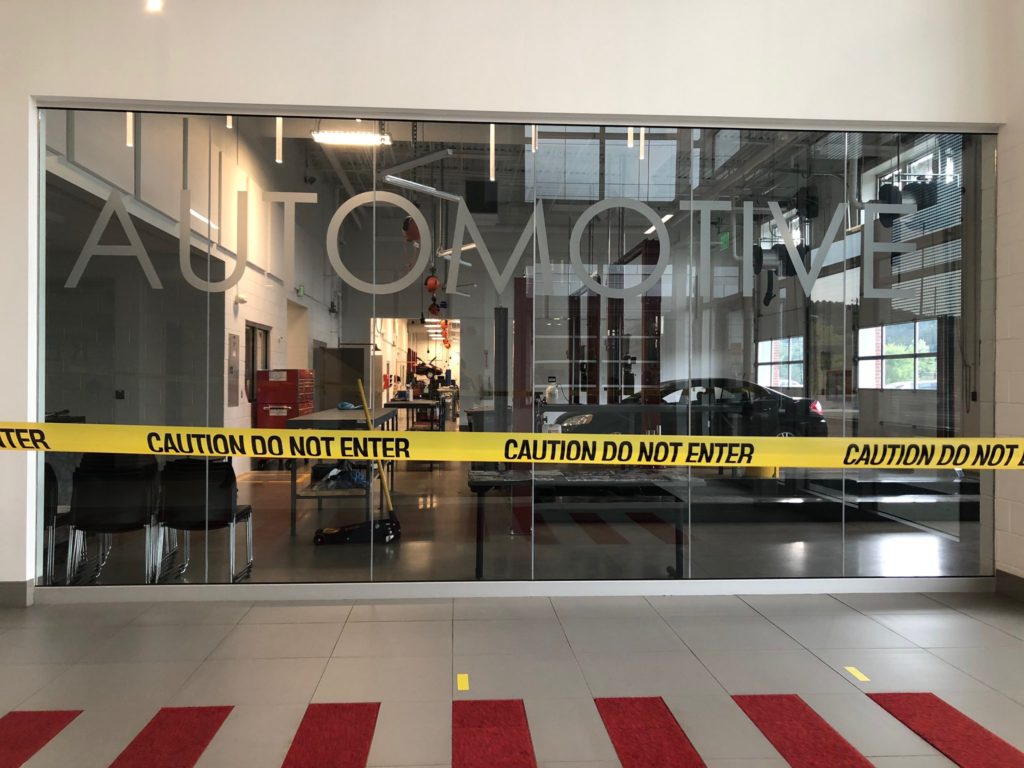
CVCC and WPCC campuses. Photo: Alli Lindenberg/EducationNC
Work in Burke, another collaborative effort in Burke County, similarly served as a potential blueprint. Work in Burke is an effort comprising Burke County schools, WPCC, and local industry partners designed to bolster the perception of job opportunities in the region, as well as drive more students toward postsecondary degrees or credentials.
With these efforts in mind, CVCC and WPCC set out to establish a plan for working together.
Enter Regional Aligning Educational Efforts
The crux of the plan is to identify areas to collaborate, rather than compete, to maximize resources and better serve students.
Burns told us, “Students should have the opportunity, without the encumbrances of being tied to one institution, to look at the next institution and say, ‘I want to do that.’”
The effort is in its formative stages, but the next iteration may look like the School of Innovation proposed by Burns and other leaders in the effort. The goal would be to create a light framework that allows for resources, including faculty, to be shared, but also for colleges to share the FTEs and headcount from students who are able to take courses at multiple institutions.
Hinshaw hopes this effort will allow the colleges to maximize resources, given the funding model for North Carolina’s community colleges — and the challenges it creates. “When our project succeeds, it can be used as a model for other community colleges across the state that need to leverage their regional assets to make North Carolina the premier workforce development state in the country,” he said. “The competition that has molded our system is now transitioning to the teamwork that is necessary for the state to move to the next level in workforce valued credentialing.
“The return on investment from the North Carolina Community College System has been undervalued in the past, and it is time for policymakers in the state to do a critical evaluation of how funding for education occurs in North Carolina. The General Assembly has used the same model for the past 60+ years, and it is time to re-evaluate that model due to the changes that have occurred throughout the country as a result of the COVID-19 pandemic.”
Looking ahead
As WPCC and CVCC continue to explore partnerships, including team-building among employees in the form of faculty competitions and picnics, among more serious efforts, they have brought Caldwell Community College and Technical Institute (CCC&TI) and Gaston College into the alignment efforts.
Mark Poarch, president of CCC&TI, noted his pride in the collaborative working relationship that his institution has had with CVCC and WPCC in recent years. Caldwell’s participation is nascent, but he said he hoped the efforts would maximize resources and create better efficiencies.
Poarch said he hoped the effort would lead to “delivering high-quality educational programs that more effectively meet the workforce needs in the region. Employers in our area continue to struggle with finding qualified talent. Better alignment of our educational programs will allow us to take a regional approach to talent development and produce a world-class workforce to meet the needs of our business and industry partners.”
Farther down U.S. 321 in Gaston County, new Gaston College President John Hauser is also pushing to align Gaston’s programs with the rest of the partnership.
Hauser shared that given “limited resources,” the future of the community college system will require new ways of thinking about course delivery.
“Considering this, the partnership is focused on maximizing opportunities to bring together resources, facilities, and innovative ways to meet the needs of our region,” he said. “Other colleges might learn that breaking down barriers across county lines provides significant opportunities for students and our business/industry sectors. … We know we can create a model for accelerated pathways to meet our current and emerging needs for our economy. Our Apprenticeship 321 program, combined with the CVCC’s K-64 model, has the potential to significantly impact student success.”
The collaborative will also provide a regional focus on the myFutureNC attainment goal, Hauser said, as well as bolster their focus on increasing targeted industry skill certifications.
The ultimate hope, according to each leader involved in the effort, is that the entire region will ultimately have a stronger workforce that powers industry recruitment and expansion in a way that lifts the economic prosperity of all of its residents.
And, along the way, if the effort succeeds, they are all optimistic that it will offer a blueprint for collaboration and partnerships for all of the community colleges across North Carolina.
Behind the Story
Nation Hahn did the reporting and wrote the story. Alli Lindenberg shot the footage and Robert Kinlaw produced the video.
